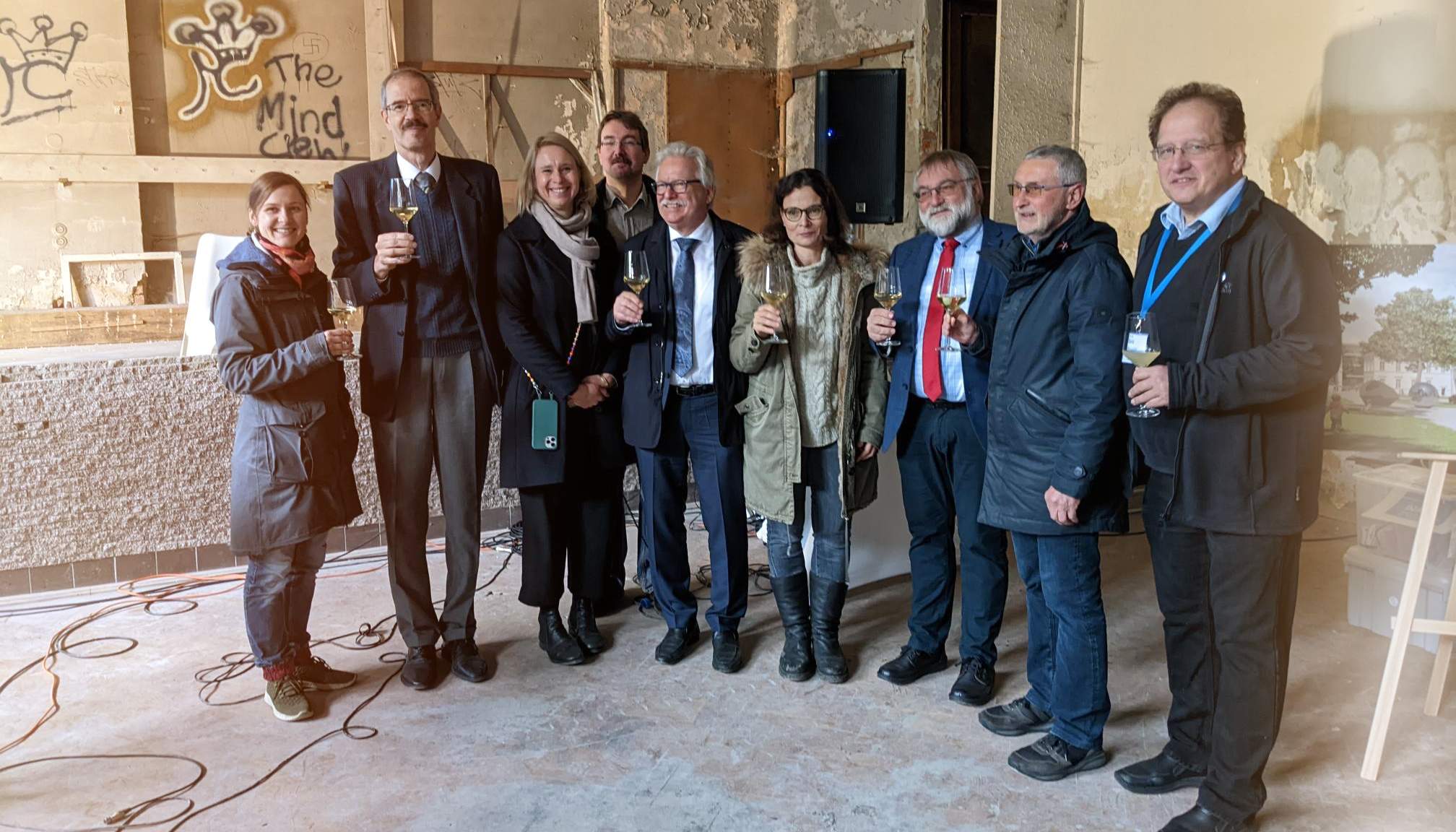From coal to the stars - now it's official
- structural development
- Hits: 1734

Now it's official - our priceless country is becoming the center of research!
From coal to the stars - The German Center for Astrophysics as a fascinating opportunity for our region
The German Center for Astrophysics (DZA) comes to Lusatia - decision made in the national competition "Knowledge creates perspectives for the region".
Shortly before 1 p.m. yesterday afternoon, the tension was almost unbearable. Scientists, dedicated Görlitz supporters, invited guests and press representatives held their breath when the federal press conference in Berlin was switched Kahlbaum site in Görlitz Then Federal Research Minister Bettina Stark-Watzinger announced the decision in the "Knowledge Creates Perspectives for the Region" competition : two large research centers will be located in the Saxon Lausitz and in the Central German Revier .
No sooner had the decision been announced than cheers broke out, champagne corks popped - and progress and an energized spirit of optimism were suddenly tangible.
After all, Görlitz is now getting a large national research center with international appeal. The initiators are certain that it will promote resource-saving digitization, develop new technologies, create perspectives for the region and be firmly rooted in the Saxon Lausitz.
The designated founding director of the DZA is the scientific director of the European Space Agency Prof. Dr. Gunther Hasinger . He is pleased that a lot of work in advance is finally bearing fruit: "After a demanding one and a half year process in which our concept was put through its paces, we are happy that we can now implement our plan. The Saxon Lausitz is for many reasons an ideal place for this", says Hasinger. "We would like to thank everyone who has supported us so far and look forward to further future cooperation!".
The DZA, which is advised by our project manager Clara Hartung , is a joint initiative of astronomy and astroparticle physics in Germany. The new large-scale research center will have two locations: In Görlitz, it will bring together the data streams from astronomical observatories around the world and develop new technologies in close cooperation with industry and technology centers in Saxony and worldwide. An open campus for cutting-edge research is planned here on the Kahlbaum site, embedded in the city, with the centers for astrophysics and data science, the technology center and the center for innovation and transfer. A visitor park is also part of the concept.
In the district of Bautzen, in the area between Hoyerswerda, Bautzen and Kamenz, an underground research laboratory, the Low Seismic Lab, will be created, which will also be available for industrial applications, such as the development of quantum computers. Particularly calm geological conditions are necessary for the development of measurement and production technologies. Bautzen has this to offer.
As ENO, we congratulate the team around Prof. Dr. Hasinger, of course, with all my heart - and we are very happy about the development in the entire region. After the development phase, annual funding of around 170 million euros is planned for the final stage; more than 1000 people will be employed in the center itself.

This is what it should look like in a few years on the Kahlbaum area, which is in need of renovation: a visitor center is also planned, which will bring laypeople closer to the highly complex research
As one of the first well-wishers, the new District Administrator, Dr. Stephan Meyer, the decision for the Görlitz location: "Today is a good day for the development of Upper Lusatia into an innovation region. (...) The DZA offers great opportunities to show young people in Upper Lusatia an exciting perspective on site. At the same time, people come from from all over the world to our region to use this unique research landscape and to work here." he explained. This would create new jobs, "in addition to the deployment of research staff," "skilled workers in technical and commercial occupations from materials processing and electronics to purchasing and administration" are needed. "This is a strong contribution to long-term structural strengthening. I look forward to continuing to work with Professor Hasinger and his team and I can assure you of the best possible support from the district of Görlitz in the implementation.", says Dr. Meyer shortly after the announcement of the decision.
Yesterday was also a happy day for project manager Clara, who works in an advisory capacity for the scientists in the structural development team: as an expert in regional economics, she welcomes the fact that the project will connect the districts of Bautzen and Görlitz more closely - and thus the cooperation between the two districts strengthened. But of course also about the further opportunities that the settlement will bring with it: "Since the importance of data will continue to increase in the future, keyword 'data processing of the world', Lusatia now has a great opportunity to be the place of origin for future-oriented technologies to become," she explains. "As an ENO, we are all happy, but I am particularly happy to be able to continue working with the DZA team and thus ensure together that the research also brings significant added value for the region and its people. Now all we really need is T- Shirts with the imprint 'From coal to the stars' and astronomy lessons in schools," she says with a smile.
What do you say about the settlement of large-scale research projects in the region?
Thank you for rating this post.

